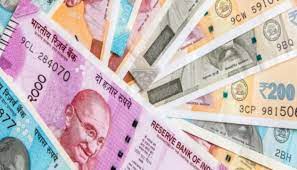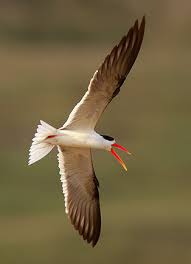Today Current Affairs: 14th November 2022 for UPSC IAS exams, State PSC exams, SSC CGL, State SSC, RRB, Railways, Banking Exam & IBPS, etc
Table of Contents
Himalayan Gray Langur:

According to a study, changes in altitude make the Himalayan Gray Langur – a primate species – pick between flowers and fruits as dietary options beyond usual leaves in the same Himalayan habitat.
- The Himalayan Gray Langur or the Chamba Sacred Langur (Semnopithecus ajax) is a colobine (leaf-eating monkey) and is an Endangered species globally on the IUCN Red List.
- They inhabit areas between 2,200-4,000 metres and in the Indian Subcontinent, their distribution is reported from Himachal Pradesh, Jammu and Kashmir and from Pakistan and Nepal.
Child-Friendly Police Stations – Kerala

Kerala will shortly have over 142 full-fledged child-friendly police stations (CFPS), giving it a head start over the rest of the country in child-centric policing.
- An extensive training has been designed in association with the United Nations Children’s Fund (UNICEF) for enhancing skill sets and bringing about attitudinal and mindset changes in officers entrusted with managing the stations.
- The idea is to bring a paradigm shift where it is supposed to fill five different roles as the situation demands —
- That of an enforcer of children’s rights,
- A mentor,
- A promoter of child rights,
- A knowledge and reference centre for all activities related to the care and protection of children,
- A facilitator for inter-agency partnerships and civil society engagement.
Statue Of Prosperity : Statue Of Nadaprabhu Kempegowda

The Prime Minister of India unveiled a 108-foot statue of Nadaprabhu Kempegowda and inaugurated Terminal 2 of Bengaluru airport, which is named after the 16th-century figure credited with founding the city.
- The status is called the “Statue of Prosperity”.
- As per the ‘World Book of Records’, it is the first and the tallest bronze statue of a founder of a city.
- Renowned sculptor and Padma Bhushan awardee Ram Vanji Sutar has designed the statue.
- Sutar had built the ‘Statue of Unity’ in Gujarat and the statue of Mahatma Gandhi in Bengaluru’s ‘Vidhana Soudha’.
- As a precursor to the unveiling, ‘Mruthike’ (sacred mud) was collected from over 22,000 locations across the state, which was mixed symbolically with the mud beneath one of the four towers of the statue.
Nadaprabhu Kempegowda:
- He was born in 1513 in a village near Yelahanka.
- He was the chieftain under the Vijayanagara Empire of the 16th century.
- He is an iconic figure among Vokkaligas, Karnataka’s second most dominant community after Lingayats.
- He studied for nine years in a GuruKula near Aigondapura (present day Hessaraghatta) where he learnt statecraft and martial skills.
- He is widely acknowledged as the founder of Bengaluru, Karnataka.
- It is said that he conceived the idea of a new city while hunting with his minister, and later marked its territory by erecting towers in four corners of the proposed city.
- He is also credited with having developed around 1,000 lakes in the city to cater to its drinking and agricultural needs.
- Kempegowda has been credited for abolishing the practice of cutting the fingers of the left hand of an unmarried woman during a custom known as ‘Bandi Devaru’, an important custom of Morasu Vokkaligas.
- He died in 1569, having ruled for about 56 years.
Eat Right Station Certification:

Bhopal Railway Station has been awarded a 4- star ‘Eat Right Station’ certification for providing high-quality, nutritious food to passengers.
- The 4-star rating indicates full compliance by the station to ensure safe and hygienic food is available to passengers.
- The ‘Eat Right Station’ certification is awarded by Food Safety and Standards Authority of India (FSSAI) to railway stations that set benchmarks in providing safe and wholesome food to passengers.
- The station is awarded a certificate upon a conclusion of an FSSAI-empanelled third-party audit agency with ratings from 1 to 5.
- The certification is part of the ‘Eat Right India’ movement.
- Other Railway Stations with this Certification: Anand Vihar Terminal Railway Station; (Delhi), Chhatrapati Shivaji Terminus; (Mumbai), Mumbai Central Railway Station; (Mumbai), Vadodara Railway Station, Chandigarh Railway Station.
Eat Right Movement:
- It is an initiative of FSSAI to transform the country’s food system in order to ensure safe, healthy and sustainable food for all Indians.
- Its tagline is ‘Sahi Bhojan, Behtar Jeevan’.
- It is aligned to the National Health Policy 2017 with its focus on preventive and promotive healthcare and flagship programmes like Ayushman Bharat, POSHAN Abhiyaan, Anaemia Mukt Bharat and Swachh Bharat Mission.
- Eat Right India adopts a judicious mix of regulatory, capacity building, collaborative, and empowerment approaches to ensure that our food is suitable both for the people and the planet.
Global Vaccine Market Report 2022 : WHO

The World Health Organisation (WHO) released ‘Global Vaccine Market Report 2022’.
- This is the first report to capture the implications of Covid-19 for vaccine markets highlighting the issue of vaccine inequity.
Findings of the Report:
- It shows that inequitable distribution is not unique to Covid-19 vaccines, with low-income countries consistently struggling to access vaccines that are in-demand by high-income countries.
- Limited vaccine supply and unequal distribution drive global disparities.
- The human papillomavirus (HPV) vaccine against cervical cancer has only been introduced in 41% of low-income countries, even though they represent much of the disease burden, compared to 83% of high-income countries.
- Affordability is a major obstacle to vaccine access. While prices tend to be tiered by income, price disparities see middle-income countries paying as much – or even more – than wealthier ones for several vaccine products.
- Free market dynamics is depriving some of the world’s poorest and most vulnerable people of their right to health. Therefore, changes are much needed to the global vaccine market to save lives, prevent disease and prepare for future crises.
- Approximately 16 billion vaccine doses, worth US$ 141 billion, were supplied in 2021, almost three times the 2019 market volume (5.8 billion) and nearly three-and-a-half times the 2019 market value (US$ 38 billion).
- The increase was primarily driven by Covid-19 vaccines, showing the incredible potential of how vaccine manufacturing can be scaled up in response to health needs.
- Although manufacturing capacity worldwide has increased, it remains highly concentrated.
- Ten manufacturers alone provide 70% of vaccine doses (excluding COVID-19).
- Several of the top 20 most widely used vaccines (such as PCV, HPV, measles and rubella containing vaccines) each currently rely mainly on two suppliers.
- In 2021, the African and Eastern Mediterranean regions were dependent on manufacturers headquartered elsewhere for 90% of their procured vaccines.
- This concentrated manufacturing base leads to risk of shortages as well as regional supply insecurity.
- Entrenched intellectual property monopolies and limited technology transfer further limit the ability of building and using local manufacturing capacity.
- The health of markets is also concerning for several of the vaccines commonly needed for emergencies, such as against cholera, typhoid, smallpox/monkeypox, Ebola, meningococcal disease, where demand surges with outbreaks and is hence less predictable.
- The continued limited investment in these vaccines could be devastating for people’s lives.
- Immunization Agenda 2030 (IA2030):
- The report highlights the opportunities for more alignment of vaccine development, production and distribution with a public health agenda, towards achieving the Immunization Agenda 2030 (IA2030) goals and informing pandemic prevention, preparedness, and response efforts.
Mangrove Alliance For Climate (MAC) : COP27

During the COP27 climate summit in Sharm El Sheikh, Egypt, the UAE and Indonesia announced the “Mangrove Alliance for Climate.”
Mangrove Alliance for Climate (MAC):
- It includes UAE, Indonesia, India, Sri Lanka, Australia, Japan, and Spain.
- It seeks to educate and spread awareness worldwide on the role of mangroves in curbing global warming and its potential as a solution for climate change.
- However, the intergovernmental alliance works on a voluntary basis which means that there are no real checks and balances to hold members accountable.
- Instead, the parties will decide their own commitments and deadlines regarding planting and restoring mangroves.
- The members will also share expertise and support each other in researching, managing and protecting coastal areas.
Mangroves:
- Mangroves are defined as assemblages of salt tolerant trees and shrubs that grow in the intertidal regions of the tropical and subtropical coastlines.
- They grow luxuriantly in the places where freshwater mixes with seawater and where sediment is composed of accumulated deposits of mud.
Currency Monitoring List:

The US Department of Treasury recently removed India along with Italy, Mexico, Thailand and Vietnam from its Currency Monitoring List of major trading partners that merit close attention to their currency practices and macroeconomic policies.
- India had been on the list for the last two years.
- China, Japan, Korea, Germany, Malaysia, Singapore, and Taiwan are the seven economies that are a part of the current monitoring list.
- The countries that have been removed from the list have met only one out of three criteria for two consecutive reports.
Currency Manipulation:
- The Trade Facilitation and Trade Enforcement Act of 2015 of US requires its Treasury Department to report to the Congress in every six months if any country is manipulating its currencies to gain trade advantages over the US.
- One of the ways of manipulation involves any country artificially weakening its currency by selling it in exchange for a foreign currency, usually the US dollar.
- This artificial weakening of currency makes its own exports cheaper, thereby gaining an unfair trade advantage over another country’s exports.
Rule Of Law Index 2022:

The report is a compilation of the ‘rule of law’ status across 140 countries worldwide.
- It was released by an international civil society organisation, World Justice Project (WJP).
- According to the report, the rule of law has declined globally for the fifth consecutive year.
- It says that the checks on executive power are weakening, and respect for human rights is falling.
- The top-ranked country in the WJP Rule of Law Index 2022 is Denmark, followed by Norway (2), Finland (3), Sweden (4), and the Netherlands (5).
- The bottom ranked countries are Venezuela (140), Cambodia (139), Afghanistan (138), the Democratic Republic of Congo (137), and Haiti (136).
- India has been ranked 77 out of 140 countries with a score of50 on the ‘rule of law index’.
- Globally, India ranks 94 out of 140 as far as adherence to fundamental rights are concerned, 111 out of 140 in civil justice, 89 out of 140 in criminal justice and 93 out of 140 in absence of corruption.
- Bangladesh scored 0.39 in the 127th rank, Pakistan settled with a 0.39 score at the 129th rank, and China scored 0.47 in the 95th rank.
- Notably, Nepal has performed better than its neighbours, with a 0.52 score and 69th rank.
Rule of Law:
- The World Justice Project defines the rule of law as a durable system of laws, institutions, norms, and community commitment that delivers: accountability, just laws, open government, and accessible justice.
Indian Skimmer:

Indian skimmer is seen in huge flocks during winter in Coringa wildlife sanctuary (Kakinada).
- A thick, orange-yellow bill with a slightly longer lower mandible (jaw) is one of the most striking features of the Indian skimmer (Rynchops albicollis).
- The Indian skimmer grows to a length of 40-43 cm.
- More widespread in winter, the Indian skimmer is found in the coastal estuaries of western and eastern India.
- It occurs primarily on larger, sandy, lowland rivers, around lakes and adjacent marshes and, in the non-breeding season, in estuaries and coasts.
- About 20% of the total population of fewer than 2,500 birds nest along river Chambal.
Threat:
- Its population is declining primarily because of the degradation of wetland and riverine habitats.
- The damming of the Chambal River, in upstream Rajasthan, has adversely affected its population at National Chambal Sanctuary, Uttar Pradesh, due to the dropping water levels allowing predators and livestock access to breeding islands.
- IUCN: Endangered




